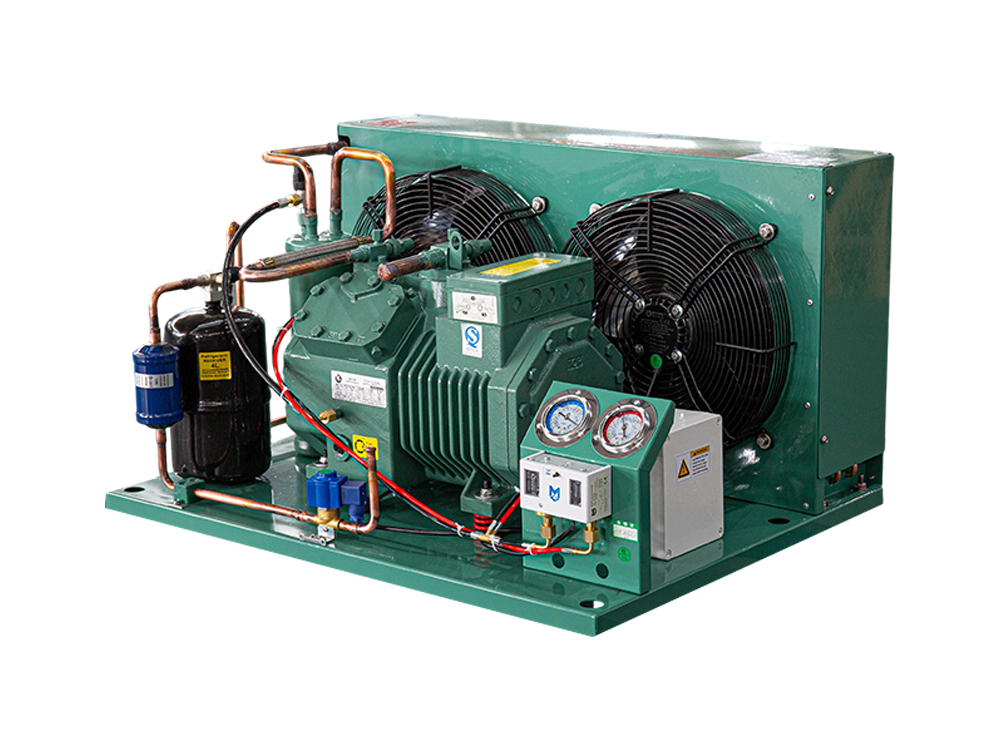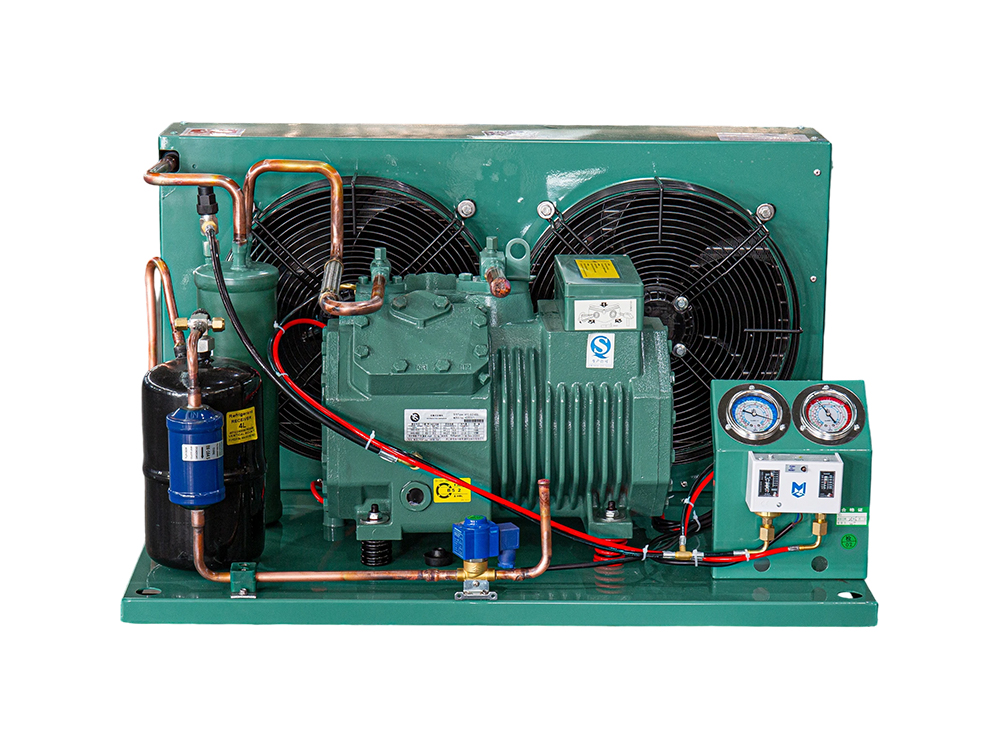How can I compare energy efficiency among different open condensing unit models?
Open condensing unit systems are essential components of commercial and industrial refrigeration. They play a critical role in ensuring reliable cooling performance while maintaining energy efficiency. For buyers, facility managers, and engineers, understanding how to compare energy efficiency among different open condensing unit models is a crucial aspect of decision-making.
Energy efficiency not only influences operating costs but also affects environmental impact. Selecting an inefficient unit can lead to excessive electricity consumption, increased maintenance, and shorter system life. Conversely, a well-optimized unit reduces costs, ensures system reliability, and contributes to sustainable operations.
Understanding energy efficiency in open condensing units
What defines energy efficiency in an open condensing unit?
Energy efficiency in refrigeration systems generally refers to the ratio of cooling output to energy input. In an open condensing unit, this efficiency is influenced by multiple factors, including the compressor performance, condenser coil design, refrigerant type, and airflow optimization. Unlike fully enclosed units, open condensing unit designs allow for flexible configuration, which can impact efficiency depending on the application scenario.
Key aspects that determine energy efficiency include:
- Compressor selection and operational characteristics
- Heat exchange efficiency of the condenser coil
- Control strategies for fan speed and load management
- Refrigerant type and compatibility with environmental standards
A comprehensive understanding of these parameters is necessary to compare different models accurately.
Why efficiency varies among models
Different open condensing unit models may appear similar but can have significant variations in energy performance. Some of the reasons include:
- Compressor type and brand: Scroll, semi-hermetic, and screw compressors have different energy consumption profiles. Some units adapt compressor performance dynamically to reduce electricity use during partial load conditions.
- Condenser design: Coil materials, fin density, and tube configuration influence heat rejection efficiency. High-performance coils can reduce power demand while maintaining desired temperatures.
- Fan and airflow systems: Variable speed fans allow optimized air movement, minimizing energy loss. Models with fixed-speed fans may consume more energy under fluctuating loads.
- System integration: Units designed for modular combination can allow partial operation of subunits, reducing energy use when full capacity is unnecessary.
These variations make it essential to consider technical specifications and performance tests rather than relying solely on nominal capacity ratings.
Evaluating energy efficiency metrics
Cooling capacity and energy input
One of the first steps in comparing open condensing unit models is to examine their rated cooling capacity relative to energy input. Manufacturers provide kW of cooling per kW of electrical power as a standard measure. Units that deliver higher cooling output for the same power consumption are more energy-efficient.
| Parameter |
Model A |
Model B |
Model C |
| Cooling capacity (kW) |
25 |
25 |
25 |
| Power consumption (kW) |
5 |
5.8 |
4.9 |
| Efficiency (kW/kW) |
5 |
4.31 |
5.10 |
From the table, Model C demonstrates superior energy efficiency despite similar cooling capacity because of lower power consumption.
Seasonal and part-load efficiency
Energy efficiency cannot be assessed only under full-load conditions. Many refrigeration systems operate at partial load for extended periods. Open condensing unit models with adaptive or variable speed compressors maintain higher efficiency under these conditions. Seasonal performance metrics, often indicated as SEER or EER, reflect real-world energy consumption more accurately.
When comparing units, look for:
- Partial load efficiency ratings
- Adaptive control capabilities
- Fan modulation or cycling features
Units with advanced load-matching capabilities tend to reduce energy costs over time.
Design factors affecting efficiency
Modular combination and non-standard customization
Zhejiang Diya Refrigeration Equipment Co., Ltd. demonstrates that modular combination design can enhance efficiency. By combining multiple subunits, systems can operate only the required number of modules, avoiding unnecessary energy consumption. Additionally, non-standard customization allows adjustment of structure, refrigerating capacity, and connection methods to suit specific application needs.
These features ensure that energy consumption aligns closely with actual cooling demand, improving overall operational efficiency.
Compressor and refrigerant optimization
Efficiency in open condensing unit models is strongly influenced by the compressor brand adaptation and refrigerant selection. Units designed to accommodate high-efficiency compressors or low-GWP refrigerants achieve better energy performance. In addition, compressors with optimized displacement and advanced control can reduce energy use without compromising cooling performance.
Airflow and condenser design
Condenser coil design plays a pivotal role in energy consumption. Units with high-performance aluminum or copper coils, optimized fin spacing, and improved tube geometry provide superior heat rejection. Coupled with controlled airflow systems, this design reduces the electrical load on fans and compressors.
It is recommended to check the air-cooled vs water-cooled configurations, as ambient conditions can significantly affect efficiency. Water-cooled condensers often perform better in hot climates, while air-cooled units may require higher energy input to maintain the same cooling output.
Practical comparison methods
Reviewing technical specifications
Before purchasing, buyers should carefully examine technical datasheets for each model. Key specifications to consider include:
- Rated cooling capacity
- Power consumption at full and partial loads
- Compressor type and operational range
- Condenser design and fan efficiency
- Modular operation capability
Comparing these metrics allows a quantitative assessment of energy efficiency.
Considering application-specific requirements
Energy efficiency is not universal; it depends on the application environment. For example, a unit designed for pharmaceutical warehousing may require precise temperature control and benefit from modular operation, whereas a marine refrigeration application might prioritize robustness and corrosion resistance.
Evaluating efficiency should include environmental conditions such as:
- Ambient temperature and humidity
- Load fluctuations
- Installation constraints and airflow limitations
Verifying certifications and standards
Compliance with industry standards provides confidence in energy performance claims. Units with recognized certifications demonstrate adherence to energy efficiency and environmental regulations. For open condensing unit buyers, checking certifications ensures that the claimed energy savings are reliable and validated.
The role of professional engineering support
Manufacturers like Zhejiang Diya Refrigeration Equipment Co., Ltd. offer professional engineering support to help optimize energy efficiency. Their team, with expertise in mechanical engineering, thermodynamics, and structural optimization, can provide personalized solutions for different industries. By evaluating load requirements, ambient conditions, and operational constraints, engineers can recommend the most energy-efficient configuration of an open condensing unit.
Such support is particularly valuable when selecting units for specialized applications like:
- Food cold chain logistics
- Industrial process cooling
- Commercial refrigeration systems
- Marine and pharmaceutical storage
This approach ensures that buyers do not rely solely on standard models but receive a solution optimized for their energy efficiency goals.
Summary and recommendations
Comparing energy efficiency among different open condensing unit models requires a comprehensive assessment of multiple factors:
- Examine cooling capacity and energy input at full and partial loads.
- Consider compressor type, refrigerant choice, and modular design features.
- Evaluate condenser coil performance, airflow systems, and adaptive control strategies.
- Align model selection with application-specific requirements, including ambient conditions and operational patterns.
- Verify industry certifications and technical compliance.
- Utilize professional engineering consultation when available to optimize performance.
By following these steps, buyers and facility managers can select open condensing unit models that deliver the desired cooling output while minimizing energy consumption. Thoughtful comparison not only reduces operating costs but also supports environmental sustainability and long-term system reliability.


 English
English русский
русский Español
Español
















